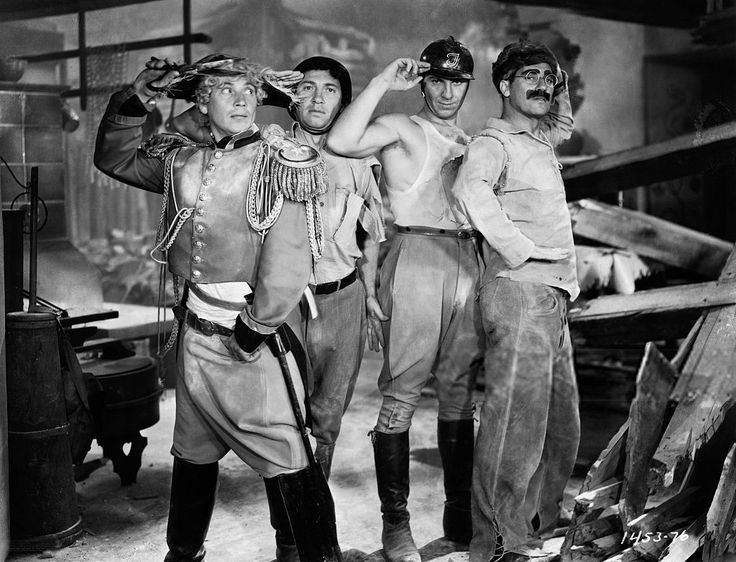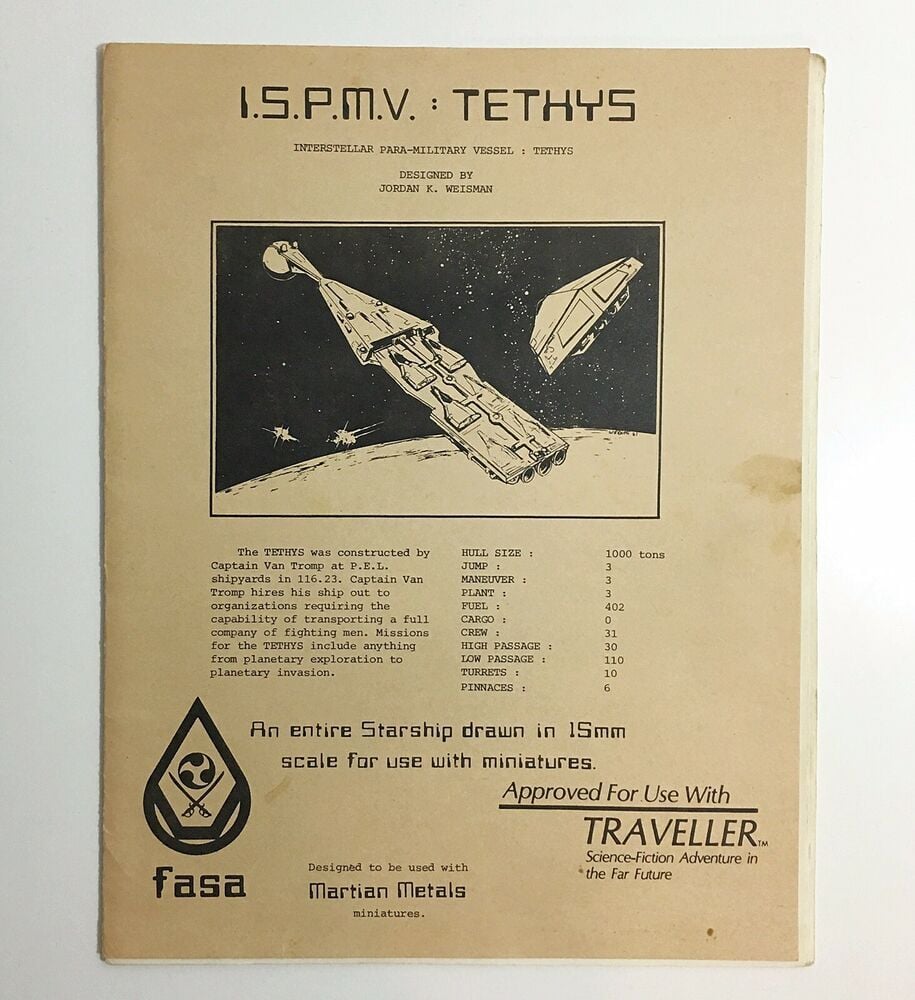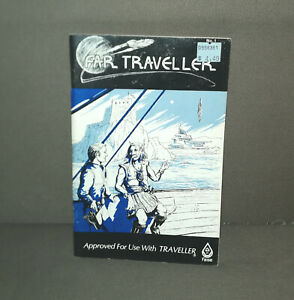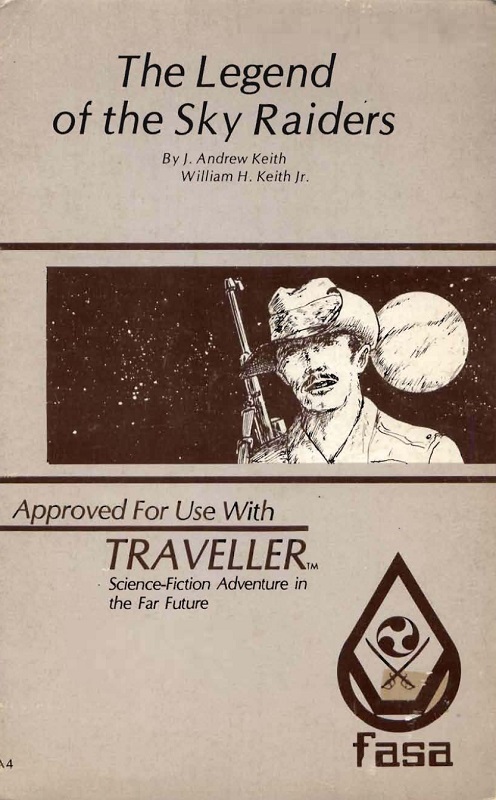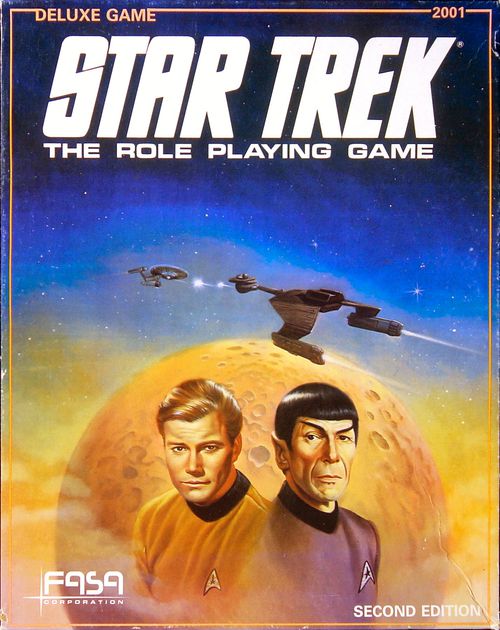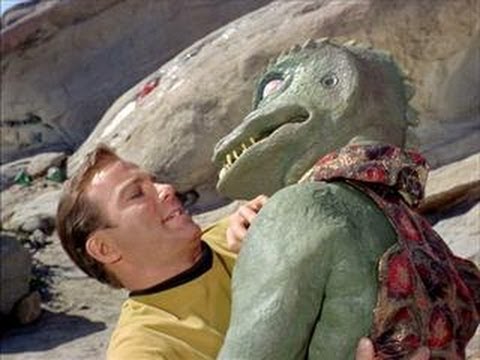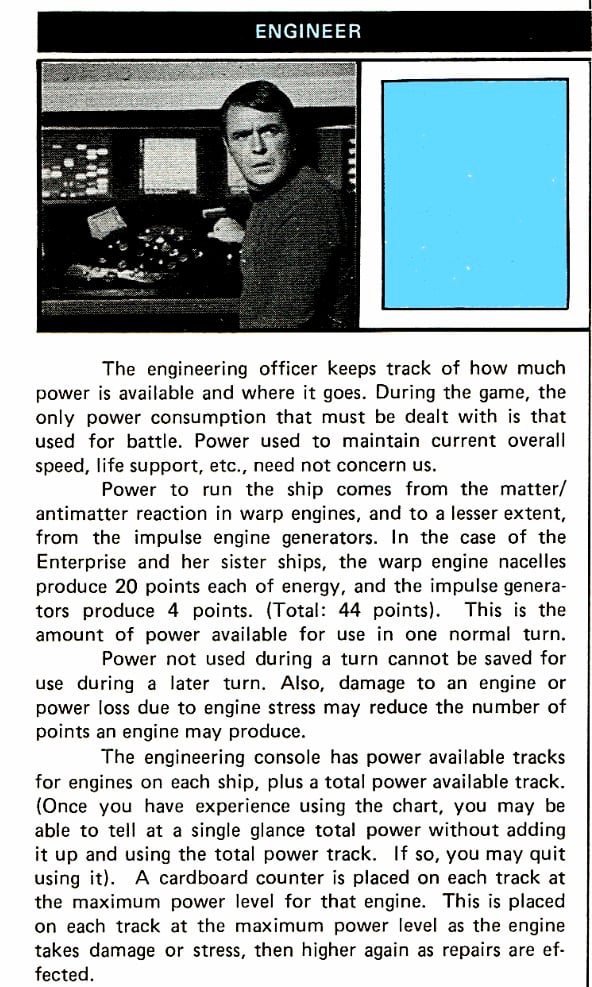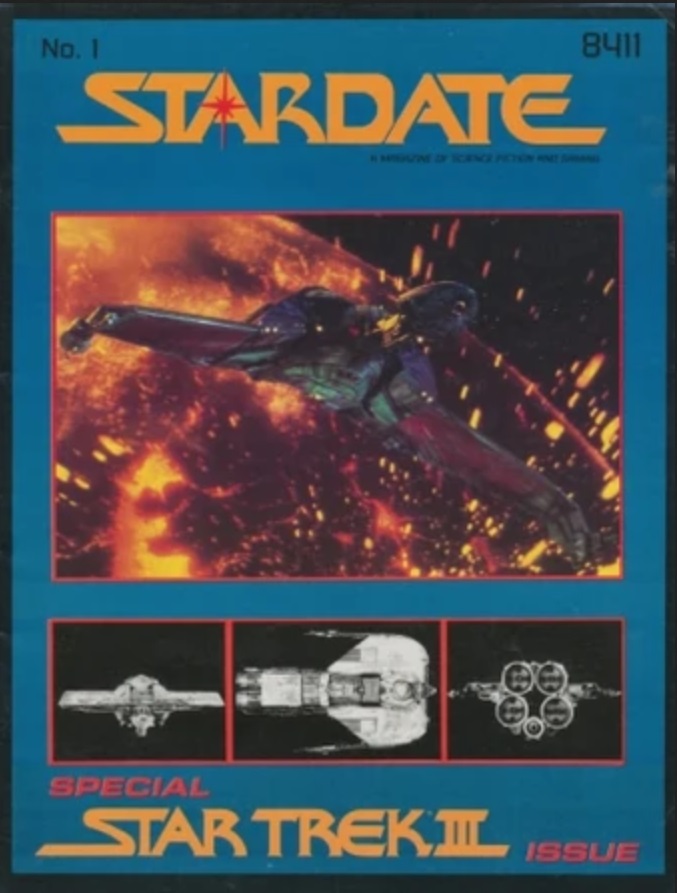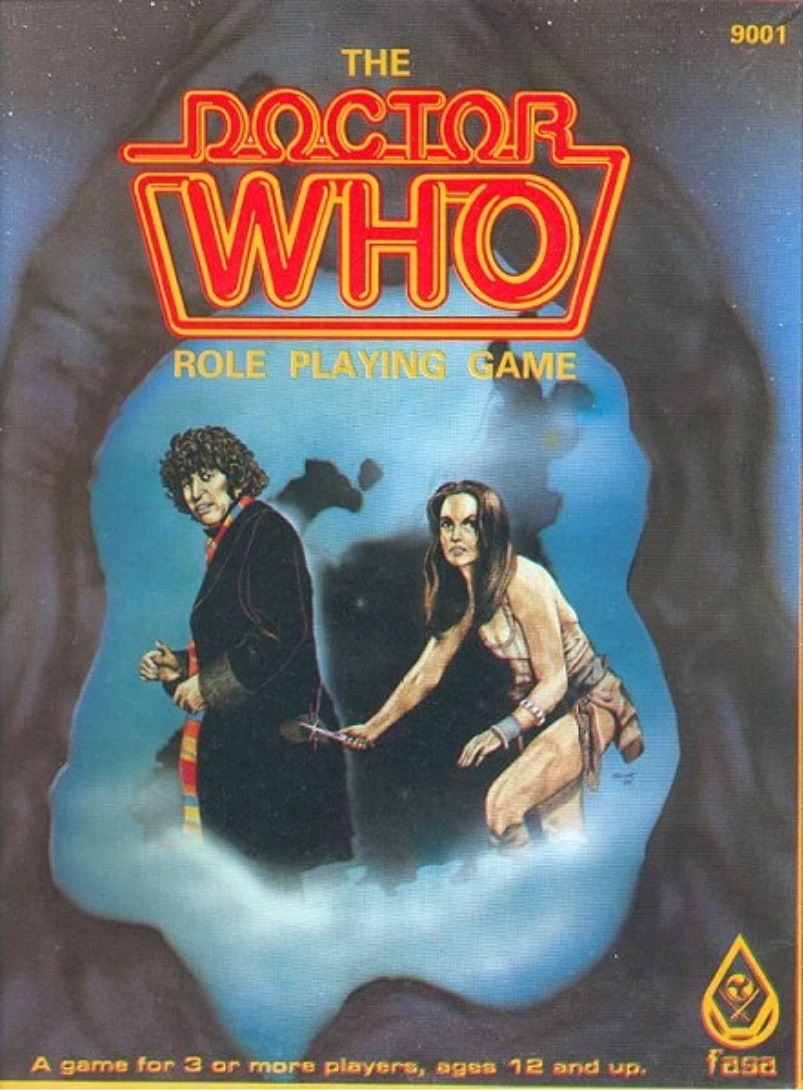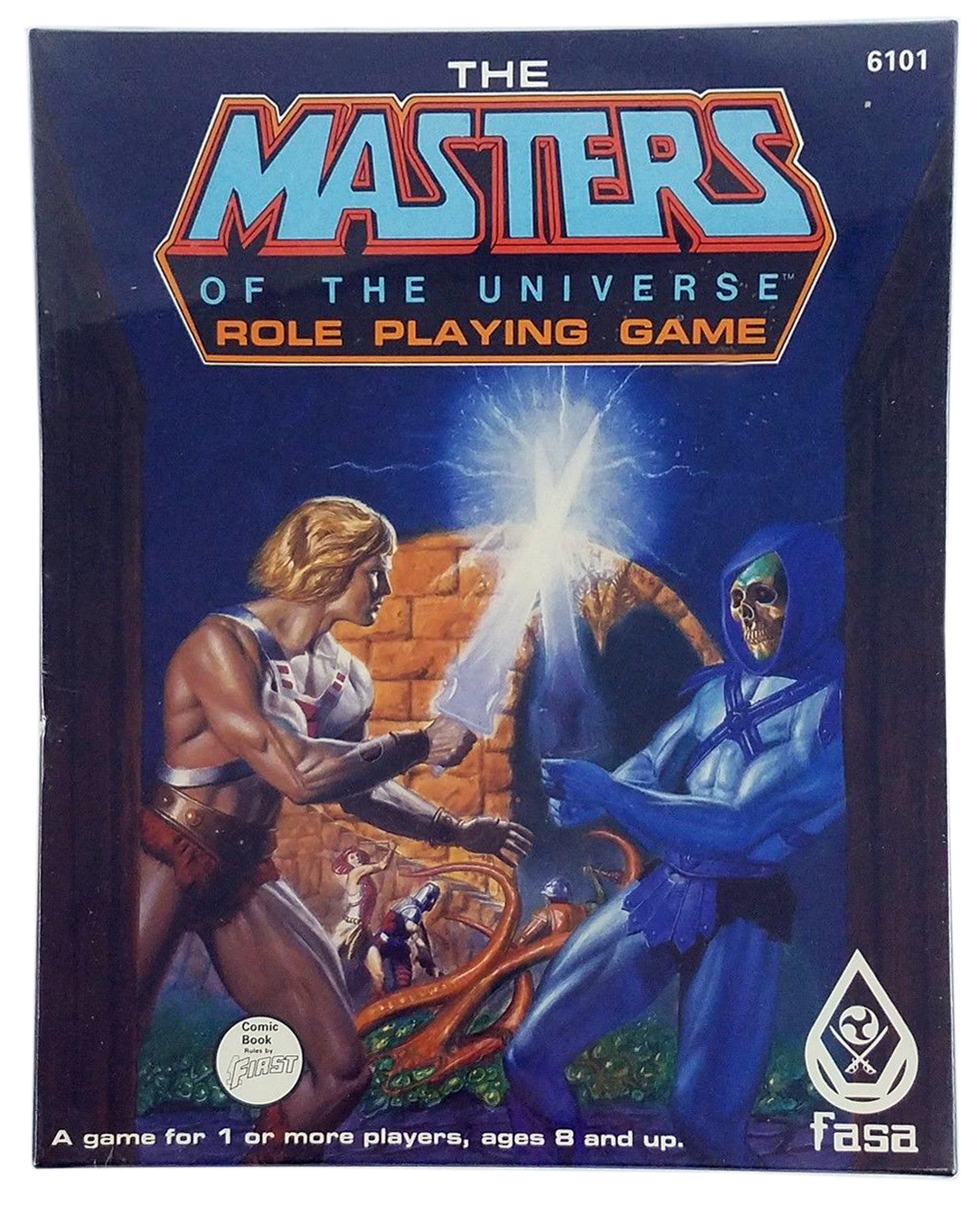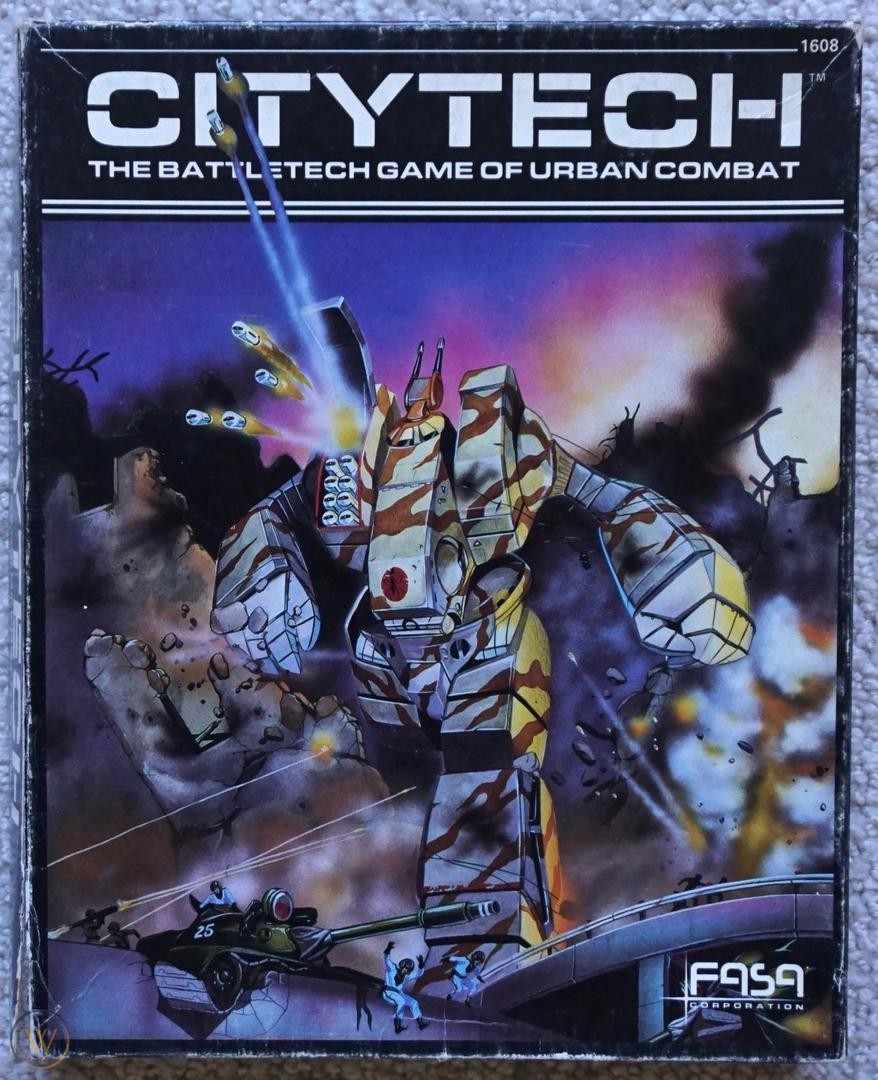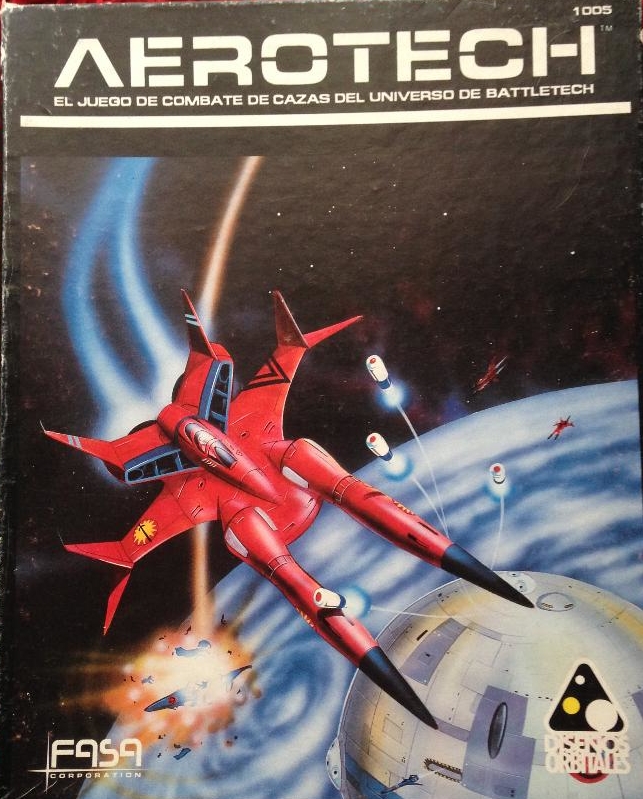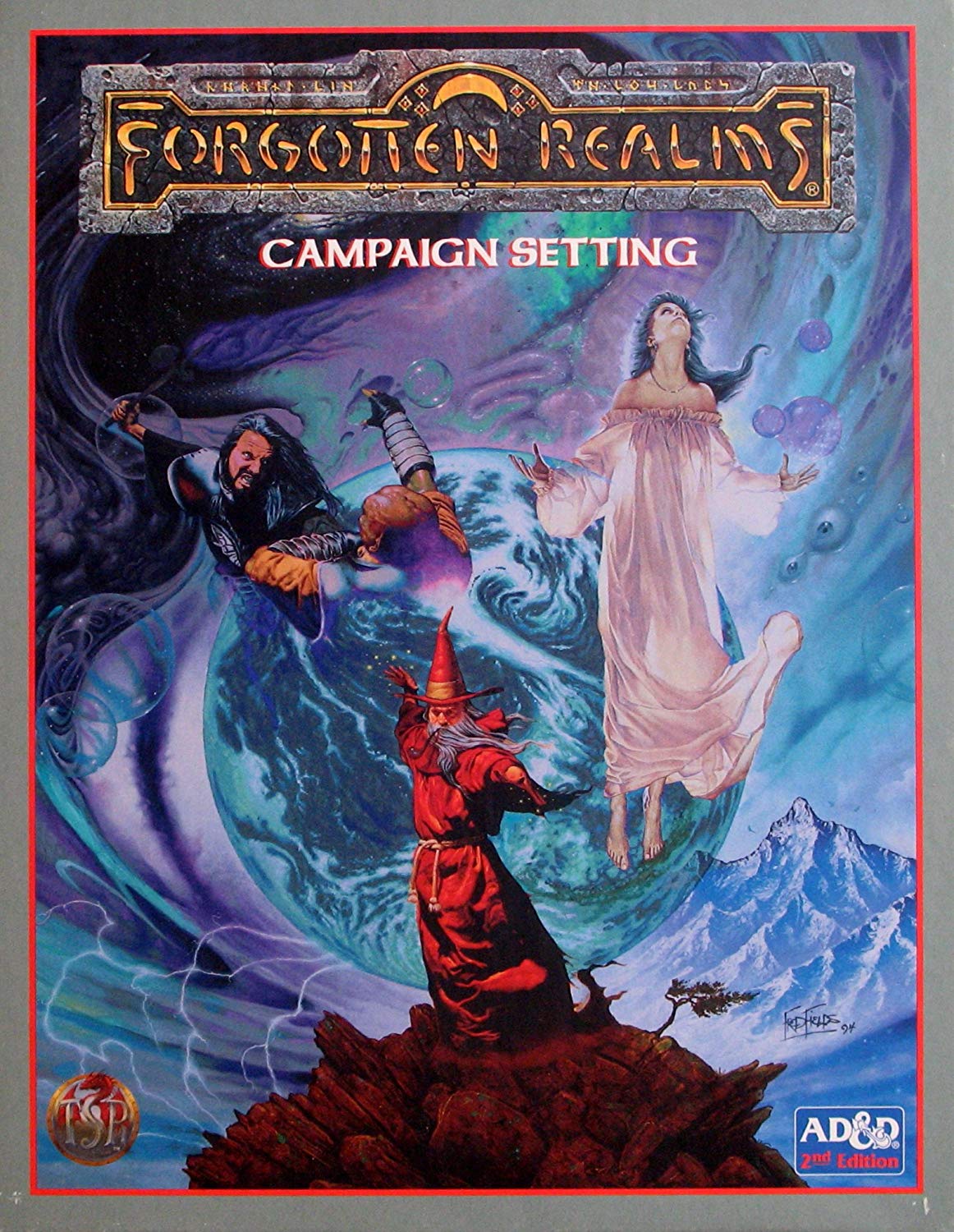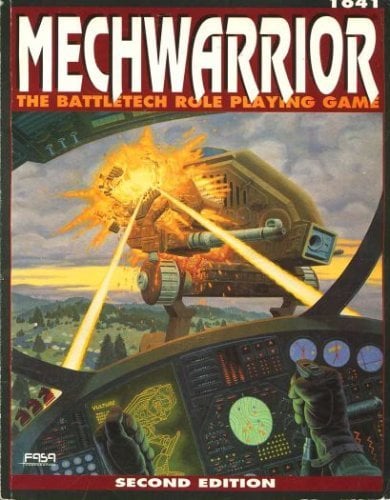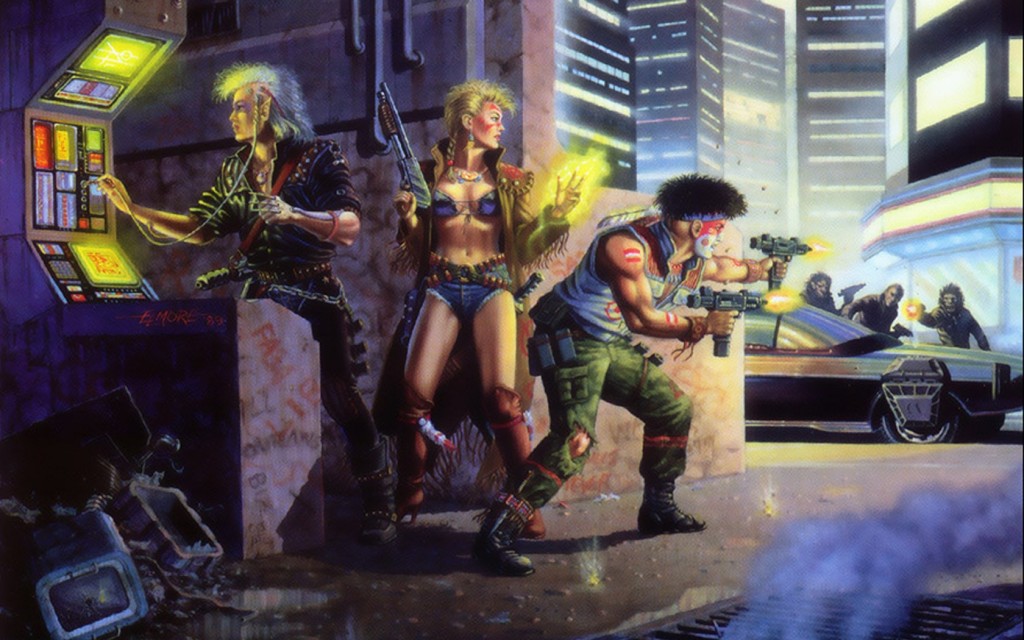BattleMechs And Cyberpunks: A History Of FASA
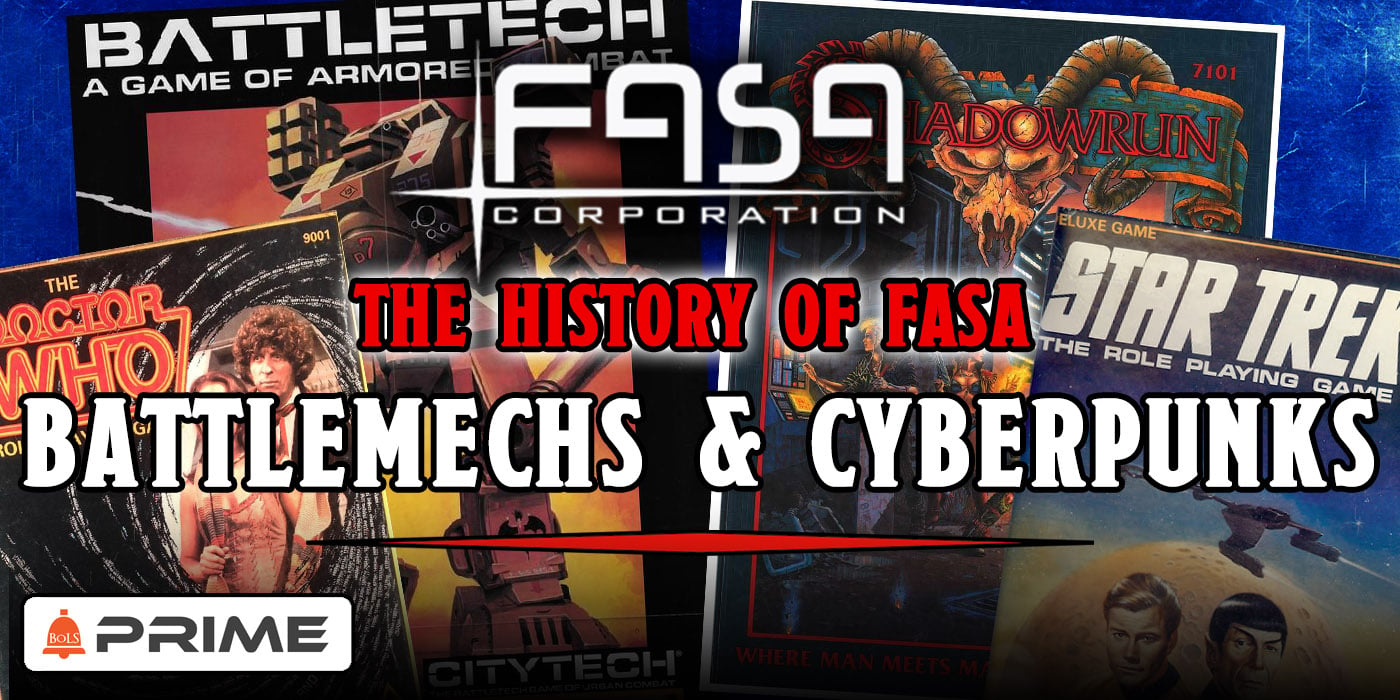

From the Final Frontier to the Inner Sphere, with a stop in the Shadows along the way, here’s a look at the history of FASA, one of gaming’s greats.
Forged in the fires of 1980, FASA is a company that you either associate with Battletech, Shadowrun, or possibly both. But with a fantasy setting, a venture into the Final Frontier of Star Trek, one of the most beloved dogfighting games, and a host of other games under their belt, FASA Incorporated has left their mark on the gaming frontier. But, like so many of the gaming giants from the early days of the roleplaying/tabletop industry boom, they have vanished from the scene–though they’re still technically around, they, for the most part now, exist as an IP holding company that keeps licesnes in the work. But how did they get there?
How does a company go from being one of the biggest miniatures games out there–a game that sparked a whole generation of video games, including two revivals, to seemingly drifting on the waves of the modern gaming landscape? Come with us back to the 80s, with your puffed jackets, your Ecto-Coolers, your Tab and your acid washed jeans as we take a look at the history of FASA. Weirdly enough, it all begins with the Marx Brothers.
You see FASA, or the Freedonian Aeronautics and Space Administration, takes its name from Duck Soup, making the Marx Brothers the only vaudeville act to inspire a generation. But technically every time you hop into the cockpit of an Atlas assault mech or plugging some hot new skillwares into your datajack, you’re being influenced by the same people that brought you the following:
But strange asides aside, FASA also begins with Jordan Weisman. Weisman, as the story goes, was bit by the gaming bug in the mid 70s, when he began playing D&D at a summer camp. The game followed him all the way to the Merchant Marine Academy and the University of Illinois at Chicago, where it would ultimately pull him away from the pursuit of a degree and instead lead him to found FASA in 1980. As the story goes:
Weisman made the move into publication in 1980. While gaming at his parents’ dining room table one evening, he told his friends that he was going to start a company to print his own adventures and deckplans for Traveller. He said he had $150 and wanted to know if anyone else would join in. L. Ross Babcock III happened to have $150 too, and thus FASA was born.
Soon Weisman and Babcock were at the local Sir Speedy, printing up a few hundred copies of Weisman’s early adventures. They sold them to a local Chicago store, and from there, they started tracing the distribution chain upward, to figure out how to get those adventures to more people. Shortly thereafter they began sending samples to distributors, who were soon selling them to retailers nation-wide. The newborn FASA even managed a booth at Gen Con XIII (1980), but had to sleep in a van—as they couldn’t afford a hotel room—and were only able to shower thanks to the kindness of Forest Brown of Martian Metals.
Advertisement
For comparison’s sake, TSR began with more of a startup investment than $300. In 1973, born out of Blackmoor and Chainmail, Dave Arneson and Gary Gygax created a game of cooperative exploration in a fantasy world that looked wildly different from the game we know today.
“It featured four races, (humans, dwarves, elves, and hobbits) and just three classes (fighting-men, magic-users, and clerics). It also introduced individual statistics that had never existed before: Strength, Intelligence, Wisdom, Dexterity, Constitution, and Charisma. This was a quantum leap from wargames of the past, as the statistics described an individual person, not a unit.”
But, when Gygax couldn’t find a publisher for their game, he teamed up with childhood friend Don Kaye and the two formed Tactical Studies Rules in 1973. But D&D was not the company’s first game. The nascent company’s first publication is Cavaliers and Roundheads, which was hoped to sell enough to raise the money they needed to publish the first thousand copies of D&D. When that didn’t happen, Brian Blume, another gamer from the early Gen Con era, joined the partnership–and out of these three people, TSR begins, with Kaye taking on the role of President and Treasurer, Blume as Vice President and Sales Manager, and Gygax taking on Editor and Advertising Manager. Though Arneson was one of the co-creators of D&D, he wouldn’t join the company until 1976. Now, the fact that one of those co-founders of TSR would eventually push it into financial trouble notwithstanding, the stories are similar, if only a few years apart.
Though by the 80s, the RPG industry had already solidified into something that could pull in an audience. I mean FASA even began with publishing Traveller adventures and deck plans. Which worked out well. Weisman’s publications were popular–their initial success would see FASA in much better standing than when it began. By 1981, they had hired new employees, produced their first professional publication–the ISPMV Tethys. This book contains the deckplans for the Tethys, a 1000-ton “Interstellar Para-Military” Q-ship armed to the teeth and capable of transporting troops.
The heavy-hitting ship also included seven different pages of 8″ x 16″ blueprints in 15 mm scale for the ship, which shows you the kind of detail work that would feed into their later, mech-driven plans. But their first official venture was not as well received as you’d hope. In issue #40 of The Space Gamer, the supplement received a poor review:
While there are no rules supplied with TETHYS, Snapshot or Azhanti High Lightning can be used. The plans are detailed and understandable and generally well done, though without color.
Unfortunately, several important pieces of information are left up to the player. The ten turrets are not specified as to size or type, no scenarios are provided, there are no High Guard statistics, and the pinnaces’ armament is not listed. Most passengers will have to rely on low passage berths, with only one medic of unknown skill aboard to revive them.
All in all the TETHYS seems incomplete. Perhaps, with a lot of work, it could be usable for miniature play or to provide a platform for a shoot-out in space. You’d probably be better off saving up for Azhanti High Lightning.
Subscribe to our newsletter!Get Tabletop, RPG & Pop Culture news delivered directly to your inbox.By subscribing you agree to our Terms of Use and Privacy Policy.
But this wasn’t enough to deter Weisman and co.. They would later release High Passage, a digest-sized magazine created by Jim Cunningham’s High Passage Group, helping to front the money for a Traveller-focused magazine–for two years. An eventual falling out would end the companies’ partnership, but in the meantime, FASA continues to ride the Traveller train all the way to the bank, moving on from publishing one magazine and the occasional supplements, to publishing their own separate magazine called Far Traveller, and creating their own line of Traveller Adventures.
And Adventures are where FASA found their footing. Starting with the Ordeal by Eshaar by J. Andrew Keith and William H. Keith Jr., referred to as ‘the Keiths’, the scenario connected into the overarcing metaplot of Traveller’s Fifth Frontier War. The two Keiths would also go on to write the Sky Raiders trilogy, which turned out to be a 170-page campaign split into three parts. If you’re a fan of old school Traveller, you’re probably familiar with this, because it remains one of the iconic adventures for that system.
As you can see, FASA remained in scrappy startup mode throughout much of its early success–as did TSR. It wasn’t until year 6 or 7 of TSR that they started getting into hardcover books. They had to endure a dice shortage on the way. FASA had their own difficulties, meanwhile. The initial run of adventures were successful, but the rights to different Traveller settings were an interesting mix. Initially based as “land grants” from GDW, each company making adventures and supplements had the rights to publish in certain areas. It’s one of the stranger rules out there–and it illustrates how much of a frontier early gaming was. Imagine D&D today parcelling out the “land rights” to certain sections of the Forgotten Realms. So that, say, Green Ronin could publish in Amn, while Kobold Press published in Waterdeep, for instance.
As you might expect, this stymied FASA’s early RPG lines. They tried branching out beyond Traveller, publishing games like Thieves’ World and Behind Enemy Lines, which would go under or be picked up by other publishers as they went. But they hit their first big breakthrough with the Final Frontier.
In 1982, late in the year, Weisman negotiated the rights for another FASA-backed sci-fi game, and rather than trying to produce another space game in a market that was already crowded by its own giants, Weisman broke out the big guns and went for one of the biggest names in space: Star Trek.
Released in 1983, Star Trek: The Role Playing Game was not the first Star Trek game–in 1978, there was Star Trek: Adventure Gaming in the Final Frontier, and more famously there was Star Fleet Battles, which was a wargame but based off of a license from the Star Fleet Technical Manual, rather than Paramount. FASA, on the other hand, went for the throat. They approached Paramount and found their license. Star Trek would prove to be difficult, though, and a lot of it has to do with the core ideas of what a roleplaying game is. For many, RPGs were synonymous with D&D (a fact that remains true to this day), but that meant that RPGs were focused around combat. After all D&D was about fantasy combat and that was its focus. D&D was a wargame before it was anything else, and it shows in the DNA of pretty much every other game at the time. Except for Glorantha/RuneQuest…eventually. But that’s a story for another time.
For now, it meant that FASA went through four different designs for the game, rejecting each in turn because they were too focused on combat, as they talk about in Space Gamer #64:
The design of Star Trek: The Role Playing Game is not very representative of how such things are normally done. We faced the same time pressure and adaptation problems as did the designers of such efforts as Call of Cthulhu and Thieves’ World. Working on Star Trek made us appreciate the time and effort that goes into adapting someone else’s visions and dreams into numbers, counters, and rules.
Jordan and Ross had several basic assumptions about the game from the beginning. They wanted a simple movement/combat system for man-to-man operations, absolute authenticity in all details of the Star Trek universe, and — especially — a starship combat system that was not just a board game.
[…]
The most fundamental assumption made about the game came the first day of discussion with Jordan and Ross — the game had to reflect the Star Trek universe in its design philosophy as well as its details. To make Star Trek: The RPG, a Klingon shoot would be in violation of everything the series represented. Man-to-man combat and starship combat systems were important, and had to be done right, but these were to take a back seat to the essential human adventure of space exploration.
Star Trek reminded us in episode after episode that armed conflict was not inevitable among thinking beings.
That’s even the point of the famous episode with Kirk and the Gorn. But with this lesson in mind, FASA’s designers had to completely reimagine things. The resulting system was a more skill-and-character focused game that was open to newcomers. If you’ve never checked out the game, it’s worth delving into, it puts players through Starfleet Academy as well as “prior service” allowing you to develop a well-rounded crew. While it bore some surface similarities to Traveller, it resulted in unique characters.
But, irony of ironies, for a game that de-emphasized combat, one of the most innovative systems about this RPG was the ship-to-ship combat system. The designers devised a “console” based fighting system, where each player had a console they would operate during combat, making it feel like you were actually on the bridge in one of the episodes.
So, Star Trek broke some new ground, and it was successful beyond FASA’s expectations. The game was popular, as you might expect, and it helped put FASA on the map as both a publisher and a design studio. The success of Star Trek meant that FASA’s gears would invariably shift towards supporting it. Weisman’s business savvy netted them the license to produce work related to the at-the-time current movies. Meaning that FASA put out material that drew on The Search for Spock and The Voyage Home, as well as launching a related Star Trek magazine, Stardate. Stardate was unusual in that it was technically a gaming magazine, but it was also dedicated to both TV and Movies as well.
You have to understand, it was an expectation that companies would supplement their games with magazines for communities to rally around. It’s like forums or influencers today–magazines were groundbreakers for communal roleplaying experiences. You would have play-by-mail games coordinated in the pages of these zines. That’s why Kickstarter launched Zine Quest earlier this year and the year before. But back to FASA…
Success with Star Trek led to another popular franchise. They initially made some inroads to properties like Battlestar Galactica and Deathworld, but their next license was Doctor Who. That’s right, there was a Doctor Who roleplaying game, and it was not nearly as well received as its Trek counterpart. Fans couldn’t get aboard its complexity, and said that the game was too dry, missing out on the wit and character of the source material. But FASA rolled on undeterred, continuing to seek out popular license after popular license, launching a Masters of the Universe RPG:
…and a game using the Robotech License. Sort of. It gets complicated, but that brings us to the first of FASA’s iconic success stories, and one of their most enduring legacies, Battletech. A game that began That’s right, we’re here to talk about Battletech now. Battletech was FASA’s attempt to crash into that sweet sweet anime market, and they succeeded. Taking “inspiration” from mecha from Macross, Fang of the Sun Dougram, and Crusher Joe, Battletech, which originally launched as Battledroids (and rumor has it they changed the name to avoid infringing on LucasArt’s droid trademark), is one of the first roleplaying games to get a cease and desist letter. In 1985, Harmony Gold USA, producers of Robotech, which was due to release that same year, sent a letter to FASA demanding that they stop using Macross designs in their work. FASA, on the other hand, revealed that they had a license to produce these works from 20th Century Imports, in turn licensed by Studio Nue, who owned Macross.
While Harmony Gold backed down for the time being, this wasn’t the last that Battletech would see of Harmony Gold. But more on that another time. For now, FASA made a huge splash with Battletech, which made an even bigger splash than Star Trek. And with Battletech FASA had something they hadn’t had in their wheelhouse before: their own world.
Both Battletech and Robotech helped fuel each others’ success. Robotech helped boost interest in giant robots, Battletech gave people a way to play with the concept when Robotech wasn’t producing new episodes. And it seemed like a match made in heaven–with Battletech quickly expanding into two different boxed expansions. There was Citytech:
…which focused on simulating combat with more than just BattleMechs, adding in rules for infantry and tanks and that sort of thing, while Aerotech expanded into the realms of air and space, introducing many mainstay concepts of the game, like aerospace fighters, DropShips, JumpShips, and WarShips. These books broke new ground and explored the fictional world of the Inner Sphere system in ways people were hungry for.
But that wasn’t enough to keep pace with the demand that was out there. Weisman and the rest of the FASA crew were excited see where the game could go, looking at marketing the Battletech franchise more like an RPG. By this point, TSR had been making its first big splash with Dragonlance, which set the stage for the Forgotten Realms later, as TSR found itself in need of an independent campaign setting. And the RPG market was hungry for new worlds to explore.
The Forgotten Realms marks a new era for TSR and roleplaying games in general. TSR had a big hit on their hands with the success of Dragonlance, but no idea of how long it could last. Wanting to be ready when the audience would start looking for whatever was coming next, they approached Ed Greenwood who had been running articles in Dragon that showed off hints of a larger world. A world rich in history and detail and ripe for the publishing.
“So I called Ed,” [Jeff] Grubb recalls. “I asked him if he had more written about this setting, or if he was making it up as the articles went along.”
When Greenwood said that he had a significant amount of material prepared for the game world, Grubb asked if he would be interested in selling the setting to TSR.
“Well,” Greenwood reportedly answered, “I figured that since it’s being published in Dragon, you guys just owned it already.”
Grubb paused for a moment. “I’m not going to tell anyone you just said that. Let me see what sort of deal we can work out.”
And with that, TSR bought the Forgotten Realms from Ed Greenwood (reportedly). And in 1987, the first Campaign Setting boxed set is published. If you haven’t read through the box set, this is one of the most exhaustively detailed settings in all of D&D. Beyond the campaign setting box came a whole line of books, starting with Waterdeep and the North and running through the various countries of Faerun. Not to mention Volo’s Guide, which featured the chronicles of Volothamp Geddarm.
For all the criticism leveled at the Forgotten Realms: that it’s bland, generic, cookie-cutter fantasy, it does exactly what TSR wants it to do. It grows into a big enough world with enough detail to support any kind of fantasy. High adventure? Check out the cities of Baldur’s Gate and Waterdeep. Looking for mystic Tolkien-style Elven shenanigans? Boy have we got an island for you. Prefer to romp around in the Shire? Hey, there’s the Dalelands.
FASA, too had a similar goal in mind. Though they had the world of Battletech to keep their sole focus. They started with wargaming scenarios that introduce more narrative framework to the wargame, and you can find examples of that with Tales of the Black Widow’s Company and The Fox’s Teeth, both of which illustrate some of the core story ideas that would go into their later experiment with roleplaying rules: Mechwarrior.
Mechwarrior is a game that I hold dear to my heart. While it’s not successful, because the RPG rules never really could tell what they wanted to be, and the game is torn between gearing players to try and play in ‘Mechs, which, if you’re doing that you may as well play Battletech, and having cool adventures across the Inner Sphere–but again, much of the Inner Sphere is presented through a ‘Mech’s-eye-lens. But, Mechwarrior had the setting info that gamers across the country were eager to see.
You could dive deeps into the House books for each of the major forces of the Succession Wars, and alongside those, “technical readouts” full of new mechs would bring out new mechs and new minis for the game. The game grew rapidly, and FASA hewed true to their Traveller roots, instilling their nascent franchise with a metaplot that began unfolding over the technical readout books. You’d see the invasion of the Clans and more start happening.
Battletech was popular. Big enough on its own to support dozens of novels, and even video games. FASA carved out its niche with Battletech, enabling them to endure the loss of their other big TV franchises, and several failed gaming experiments. They lasted long enough to find their next big hit, a roleplaying game that rode the wave of the creation of a new genre: Cyberpunk.
After William Gibson put out Neuromancer, and R. Talsorian put out Cyberpunk, FASA crashed onto the scene with Shadowrun, which first released in 1989. Set in the world of 2050 where the virtual reality internet and cyberware are the order of the day, it might have been another cyberpunk game among many, jockeying for space among Talsorian’s Gibsonian masterpiece, Cyberpunk, but Weisman hit on the idea of “elves on Harleys.”
Shadowrun and Battletech would lead FASA through to some of its best years, but would also sow the seeds of its downfall. That, however, is a story for next time. Tune in next time for Part 2.
What was your favorite game from FASA? Do you still play Battletech? Shadowrun?

